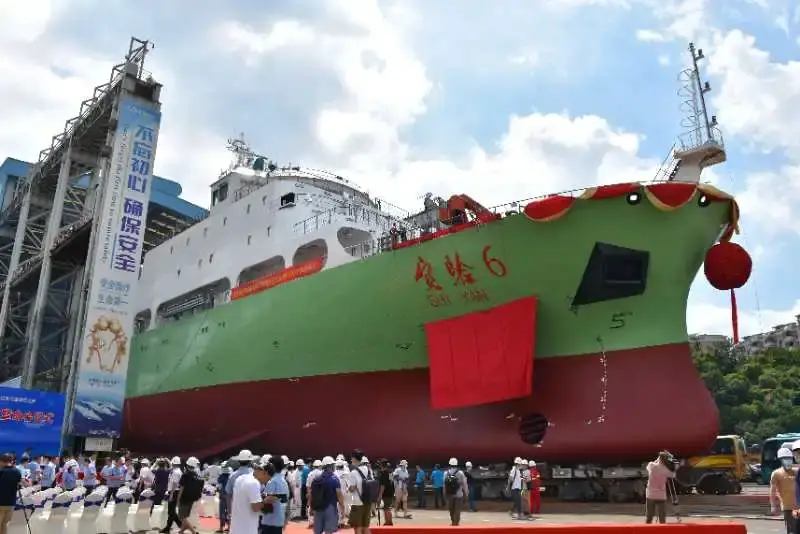China’s state media Global Times reported on Saturday launched the Shiyan-6, its first modern scientific research vessel focusing on geophysical exploration and seismic acquisition and processing, in Guangzhou, South China’s Guangdong Province. The launch is believed to be an important step in boosting the country’s marine exploration capability in the South China Sea. With a total investment of 517.5 million yuan ($74 million), the vessel has a length of 90.6 meters, a width of 17.0 meters, a depth of 8.0 meters, and a gross tonnage of 3,990, able to accommodate 60 crew members. Its maximum speed is 16.5 knots, with an endurance of 12,000 nautical miles, and a self-sustaining capacity of 60 days.
Shiyan-6 scientific research vessel able to carry out investigations in geophysics, ocean physics, sea-air interaction, marine chemistry and other disciplines, the vessel is also capable of surveying and sampling topography, landforms, currents, and biomes in extreme environments such as deep trenches. Samples that it collects in the ocean can be quickly processed and analyzed on site in vesselboard laboratories, and data can be transmitted synchronously to land-based laboratories, allowing it to serve as an offshore mobile laboratory. The vessel is expected to enter service in 2021. The launch of the vessel does not mean construction work has been completed.
The launch of this national marine research vessel greatly improves China’s ocean exploration and data acquisition ability, which is an important step for the development and utilization of marine space resources, oil and gas minerals and biological genetic resources, said Long Lijuan, deputy director of the South China Sea Institute of Oceanology (SCSIO), Chinese Academy of Sciences. China has more than 60 oceanographic research vessels and other professional investigation vessels in service. However, these vessels are more focused on speed, and often neglect the disturbance of air bubbles on acoustic equipment on the bottom of the vessel, which will cause the equipment to fail in more extreme sea conditions.
















